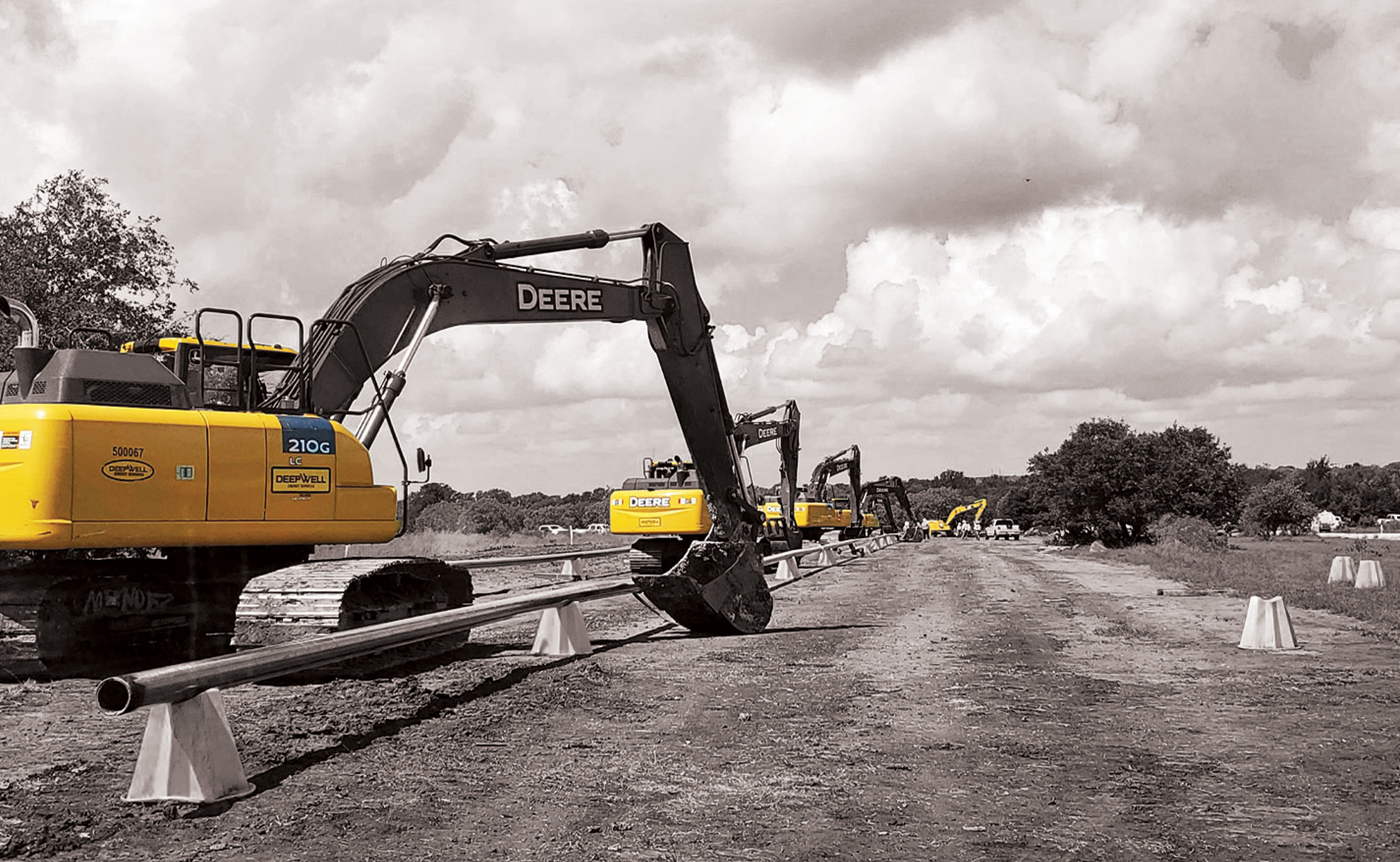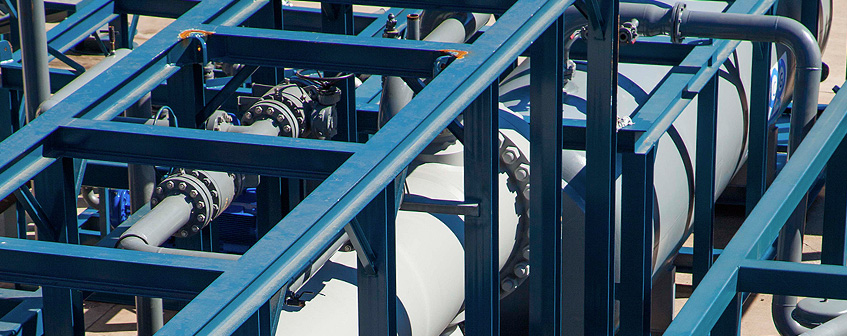Superior Rentals midland: local company profile for businesses and contractors
A Comprehensive Overview to the Various Types of Oil Field Equipment and Pipeline Equipment Available
The oil and gas market relies greatly on specialized tools for efficient removal and transportation. Different sorts of machinery, from drilling rigs to storage space containers, play important duties in this complex process. Each item of tools offers distinct functions that add to overall operational success. Comprehending these elements is vital for any individual included in the field. As the sector evolves, so also do the modern technologies that sustain it. What innovations are on the perspective?

Drilling Rigs: The Backbone of Oil Expedition
Drilling rigs function as the necessary machinery in the domain name of oil expedition, allowing companies to accessibility hydrocarbon gets hidden deep below the Planet's surface area. These rigs come in numerous types, including land rigs, offshore rigs, and mobile systems, each designed to run in specific atmospheres. Outfitted with advanced technology, drilling rigs can penetrate geological developments with accuracy, making sure reliable source removal. The structural integrity and operational capabilities of these rigs are critical, as they should hold up against severe conditions and considerable stress. The selection of a drilling gear affects the total task expense and timeline, making it a vital factor to consider for oil firms looking for to enhance their exploration efforts and optimize productivity in their operations.
Pumps: Important for Fluid Movement
In the oil removal procedure, the function of pumps is significant, helping with the movement of liquids throughout different phases of production. Pumps are crucial for moving petroleum, water, and other liquids from below ground storage tanks to the surface area and after that with pipelines to refineries. They come in various types, consisting of centrifugal, positive displacement, and submersible pumps, each serving specific objectives based on the fluid features and functional demands. Centrifugal pumps are commonly made use of for their performance in high-flow applications, while positive displacement pumps master dealing with thick liquids. The option of pump impacts total effectiveness, operational safety and security, and upkeep prices. Correct option and upkeep of pumps are essential for maximizing manufacturing and reducing downtime in oil area operations.
Valves: Managing Flow and Pressure

Valves play a vital function in handling the circulation and stress of fluids within oil areas and pipelines. Different kinds of valves serve distinctive applications, each made to satisfy details functions essential for effective procedure - Superior Rentals reviews. Understanding the characteristics and uses these shutoffs is essential for enhancing system performance and safety and security
Kinds of Valves
Important elements in oil field operations, shutoffs play a vital role in controlling the circulation and pressure of liquids within pipes and tools. Numerous kinds of shutoffs are used to fulfill the varied requirements of oil and gas manufacturing. Typical types include gateway shutoffs, which supply a straight-line flow and marginal stress decrease; globe shutoffs, understood for their throttling abilities; and ball valves, acknowledged for their quick on/off control. Additionally, check valves protect against heartburn, while butterfly shutoffs supply a lightweight solution for controling flow. Each valve kind is developed with details products and configurations to endure the rough problems typically discovered in oil areas, making sure dependability and efficiency in operations. Understanding these kinds is critical for reliable system management.
Valve Applications and Features
While different kinds of valves offer unique functions, their key applications revolve around managing flow and pressure within oil and gas systems. Valves such as gateway, globe, and ball valves regulate liquid movement, making certain peak performance and safety. Entrance valves are commonly made use of for on/off control, offering minimal flow resistance. World shutoffs, on the other hand, deal accurate flow regulation, making them ideal for strangling applications. Ball shutoffs are preferred for their fast procedure and limited securing abilities. In addition, pressure alleviation valves are crucial for preventing system overpressure, guarding devices honesty. On the whole, the suitable option and application of valves improve functional efficiency, making sure the dependable transportation of oil and gas through pipes and processing centers.
Compressors: Enhancing Gas Transport
Compressors play an essential role in the efficient transport of gas, guaranteeing that it moves smoothly through pipelines over long ranges. These tools increase the pressure of all-natural gas, allowing it to conquer rubbing and altitude adjustments within the pipeline system. Furthermore, compressors promote the harmonizing of supply and demand, fitting changes in consumption and production rates. Different sorts of compressors are utilized in the sector, including centrifugal, reciprocating, and rotating screw compressors, each offering distinct benefits based upon the functional demands. Routine upkeep of these compressors is vital to take full advantage of effectiveness and lessen downtime, ultimately adding to a reliable gas transport network. Their important function underscores the importance of compressors in the total oil and gas framework.
Storage Tanks: Safe and Effective Fluid Administration
Effective transportation of gas counts on various sustaining systems, among which is the correct monitoring of storage containers. These containers play an essential role in securely consisting of fluids, guaranteeing that operational performance is preserved while reducing ecological dangers. Constructed from durable products, they are developed to stand up to high pressures and harsh aspects. Correctly sized and strategically situated, tank promote the smooth circulation of all-natural gas and other fluids, protecting against bottlenecks in supply chains. Routine upkeep and tracking are crucial to spot leaks or structural concerns, promoting security and conformity with governing standards. Ultimately, the efficient management of tank is crucial for the general honesty and reliability of the oil and gas sector's fluid handling systems.
Pipeline Solutions: Framework for Transportation
Pipeline systems function as the backbone of the oil and gas market, helping with the reliable transport of hydrocarbons over vast distances. These systems contain various components, including pipes, valves, pumps, and compressors, all thoroughly made to assure smooth circulation. The products made use of in pipeline construction, frequently steel or high-density polyethylene, are picked for toughness and resistance to deterioration. Pipeline networks can span across land and water, linking manufacturing sites to refineries and circulation. Additionally, advanced technology makes it possible for real-time surveillance of circulation prices and stress levels, boosting functional efficiency. The strategic placement of these pipelines reduces environmental impact while making best use of source accessibility, thereby playing a vital duty in meeting power demands around the world.
Safety And Security Equipment: Making Certain Worker and Environmental Protection
The procedure of pipeline systems, while necessary for energy transport, also provides considerable security difficulties for workers and the environment. Safety tools plays a considerable duty in alleviating these threats. Individual safety devices (PPE) such as helmets, handwear covers, and non-slip footwear safeguards employees from physical risks. Additionally, gas discovery systems keep an eye on for leakages, guaranteeing that hazardous materials do not position a hazard to workers or the bordering environment. Emergency closure systems are imperative for quickly stopping procedures during a crisis, protecting against potential disasters. Spill containment materials, including absorbents and barriers, are fundamental for reducing environmental impact. In general, buying all-inclusive security devices is important for preserving operational honesty and safeguarding both employees and the atmosphere in the oil and gas field.

Often Asked Inquiries
Exactly how Do I Pick the Right Oil Field Equipment for My Task?
Choosing the ideal oil field equipment entails reviewing job specifications, budget restraints, and functional requirements. Consider variables such as devices reliability, compatibility with existing systems, and the supplier's online reputation to ensure peak performance and safety and security.
What Are the Maintenance Needs for Oil Field Equipment?
Maintenance requirements for oil area devices consist of normal evaluations, lubrication, and timely fixings. Operators must also abide by maker guidelines, monitor efficiency metrics, and guarantee conformity with safety laws to enhance long life and effectiveness.

How Can I Guarantee Compliance With Environmental Laws?
To ensure compliance with environmental regulations, companies must conduct normal audits, apply best techniques, more info spend in training, keep appropriate paperwork, and stay updated on regulations (Superior Rentals near me). Cooperation with environmental agencies can likewise improve adherence to guidelines
What Is the Average Lifespan of Pipeline Equipment?
The ordinary life-span of pipeline tools generally ranges from 20 to 50 years, depending upon variables such as material quality, environmental conditions, and maintenance methods. Routine examinations can significantly influence longevity and functional performance.
How Do I Safely Deliver Oil Field Equipment to Remote Locations?
Transporting oil area tools to remote locations calls for careful planning, consisting of path analysis, protecting authorizations, making use of appropriate automobiles, and ensuring security procedures are followed. Correct training and communication among teams are crucial for effective transportation.